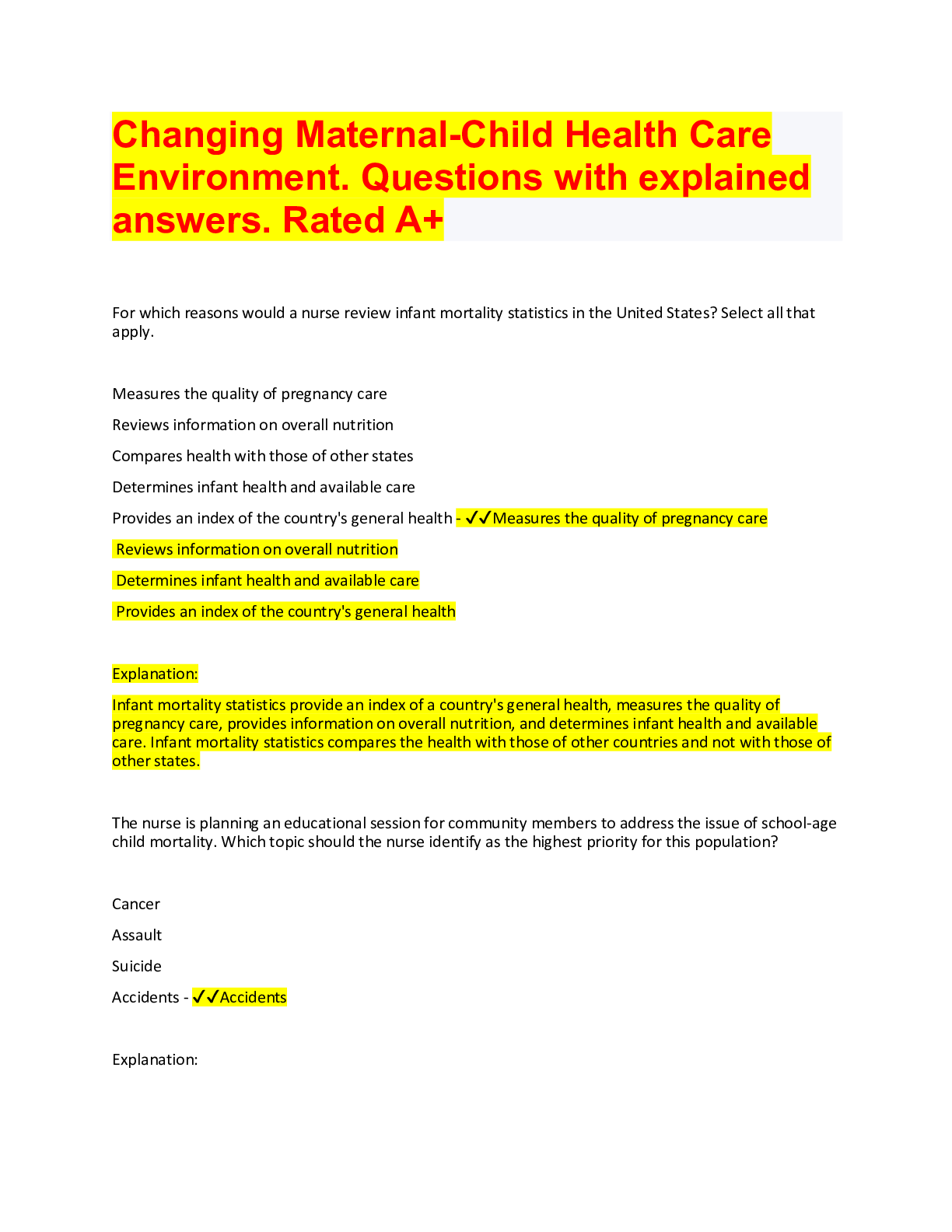*NURSING > QUESTIONS & ANSWERS > Chapter 22: Infant Feeding Foundations of Maternal-Newborn & Women’s Health Nursing, 7th Edition Q (All)
Chapter 22: Infant Feeding Foundations of Maternal-Newborn & Women’s Health Nursing, 7th Edition Questions with explained answers.
Document Content and Description Below
1. The breastfeeding patient should be taught a safe method to remove her breast from the baby’s mouth. Which suggestion by the nurse is most appropriate? a. Break the suction by inserting your fi... nger into the corner of the infant’s mouth. b. A popping sound occurs when the breast is correctly removed from the infant’s mouth. c. Slowly remove the breast from the baby’s mouth when the infant has fallen asleep and the jaws are relaxed. d. Elicit the Moro reflex in the baby to wake the baby up, and remove the breast when the baby cries. ANS: A Inserting a finger into the corner of the baby’s mouth between the gums to break the suction avoids trauma to the breast. A popping sound indicates improper removal of the breast from the baby’s mouth and may cause cracks or fissures in the breast. The infant who is sleeping may lose grasp on the nipple and areola, resulting in chewing on the nipple, making it sore. Most mothers prefer the infant to continue to sleep after the feeding. Gentle wake-up techniques are recommended. DIF: Cognitive Level: Application OBJ: Nursing Process Step: Implementation MSC: Patient Needs: Health Promotion and Maintenance 2. Which woman is most likely to continue breastfeeding beyond 6 months? a. A woman who avoids using bottles. b. A woman who uses formula for every other feeding. c. A woman who offers water or formula after breastfeeding. d. A woman whose infant is satisfied for 4 hours after the feeding. ANS: A Women who avoid using bottles and formula are more likely to continue breastfeeding. Use of formula decreases breastfeeding time and decreases the production of prolactin and, ultimately, the milk supply. Overfeeding after breastfeeding causes a sense of fullness in the infant, so the infant will not be hungry in 2 to 3 hours. Formula takes longer to digest. The new breastfeeding mother needs to nurse often to stimulate milk production. DIF: Cognitive Level: Analysis OBJ: Nursing Process Step: Assessment MSC: Patient Needs: Health Promotion and Maintenance 3. In which condition is breastfeeding contraindicated? a. Triplet birth b. Flat or inverted nipples c. Human immunodeficiency virus infection d. Inactive, previously treated tuberculosis ANS: C [Show More]
Last updated: 2 years ago
Preview 1 out of 12 pages

Buy this document to get the full access instantly
Instant Download Access after purchase
Buy NowInstant download
We Accept:

Reviews( 0 )
$7.00
Can't find what you want? Try our AI powered Search
Document information
Connected school, study & course
About the document
Uploaded On
Jun 25, 2021
Number of pages
12
Written in
Additional information
This document has been written for:
Uploaded
Jun 25, 2021
Downloads
0
Views
99

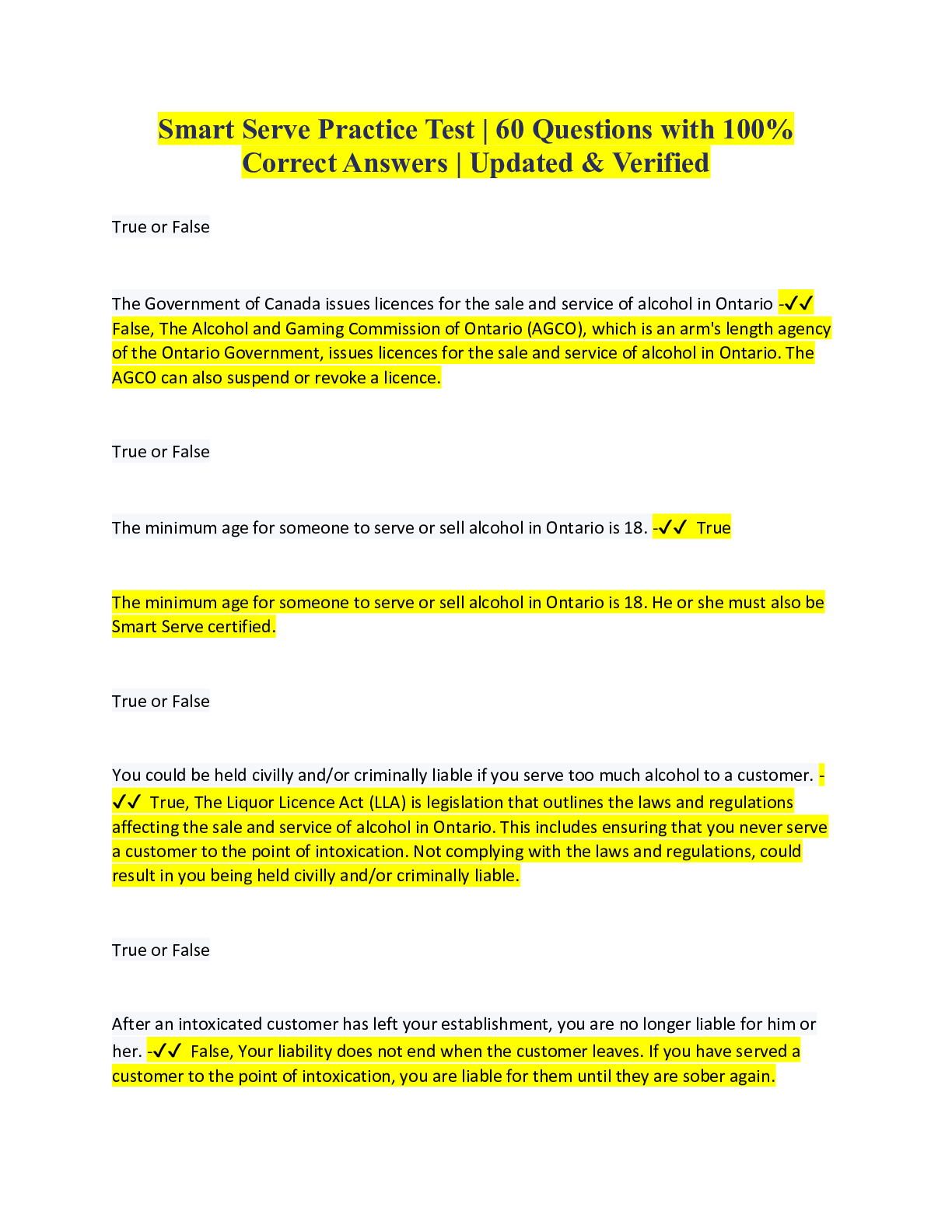

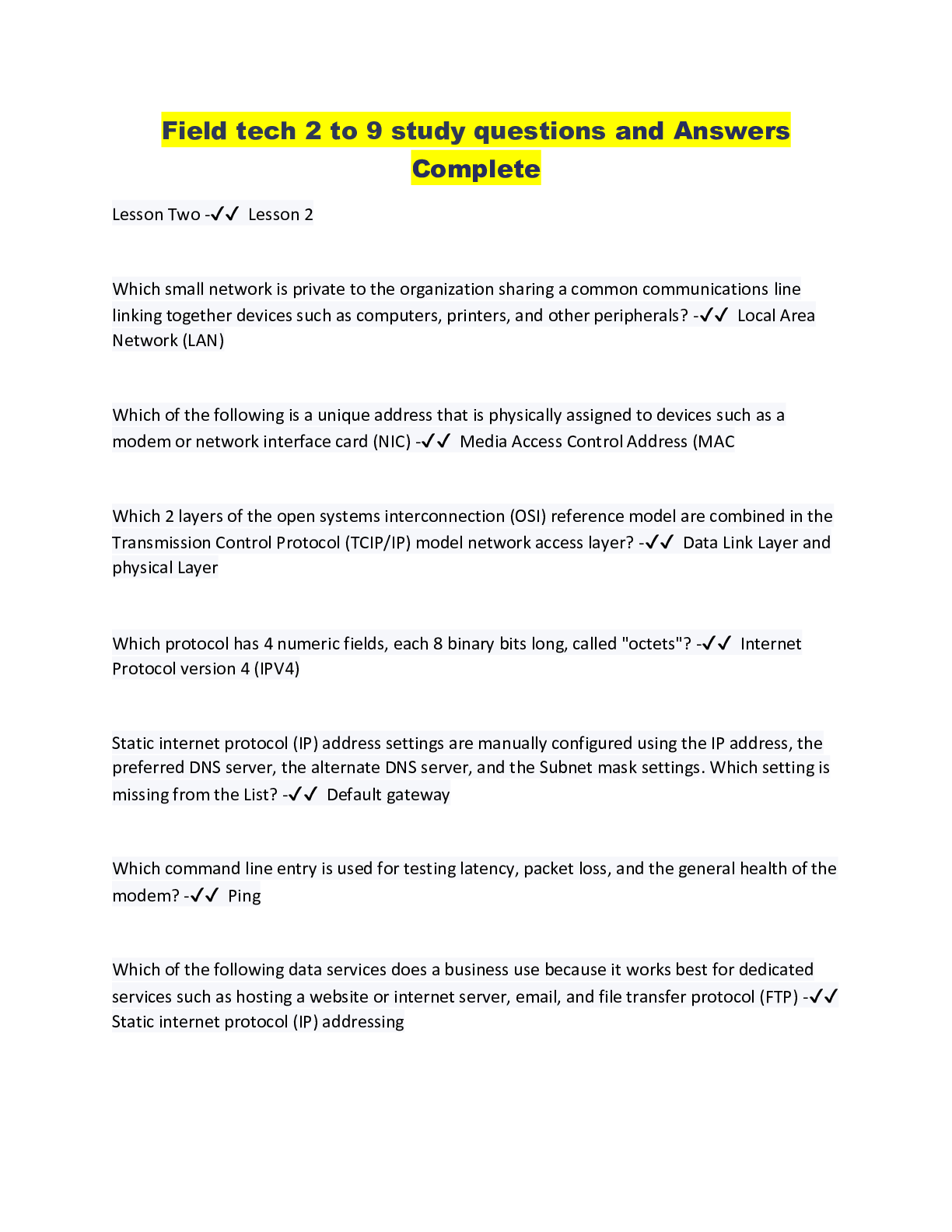
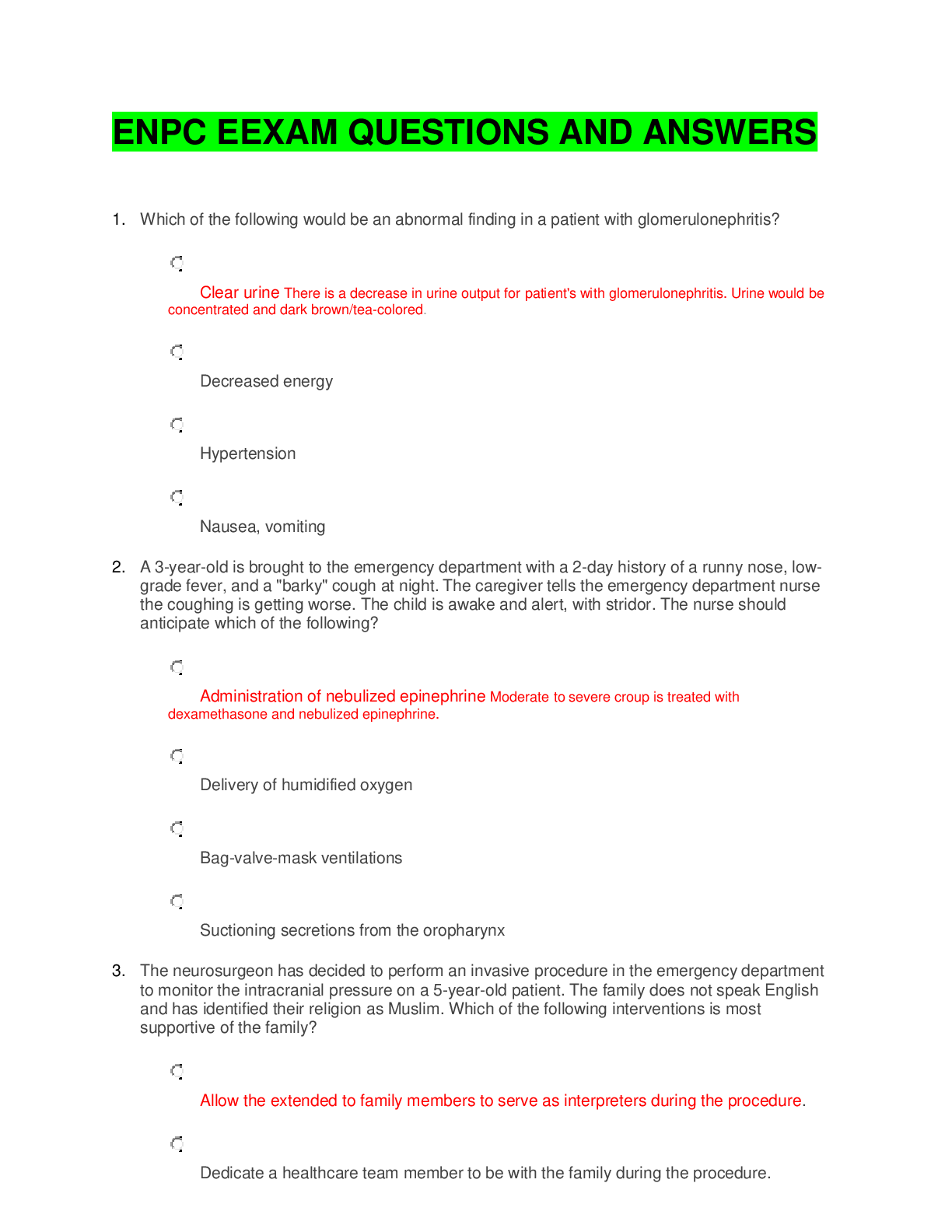
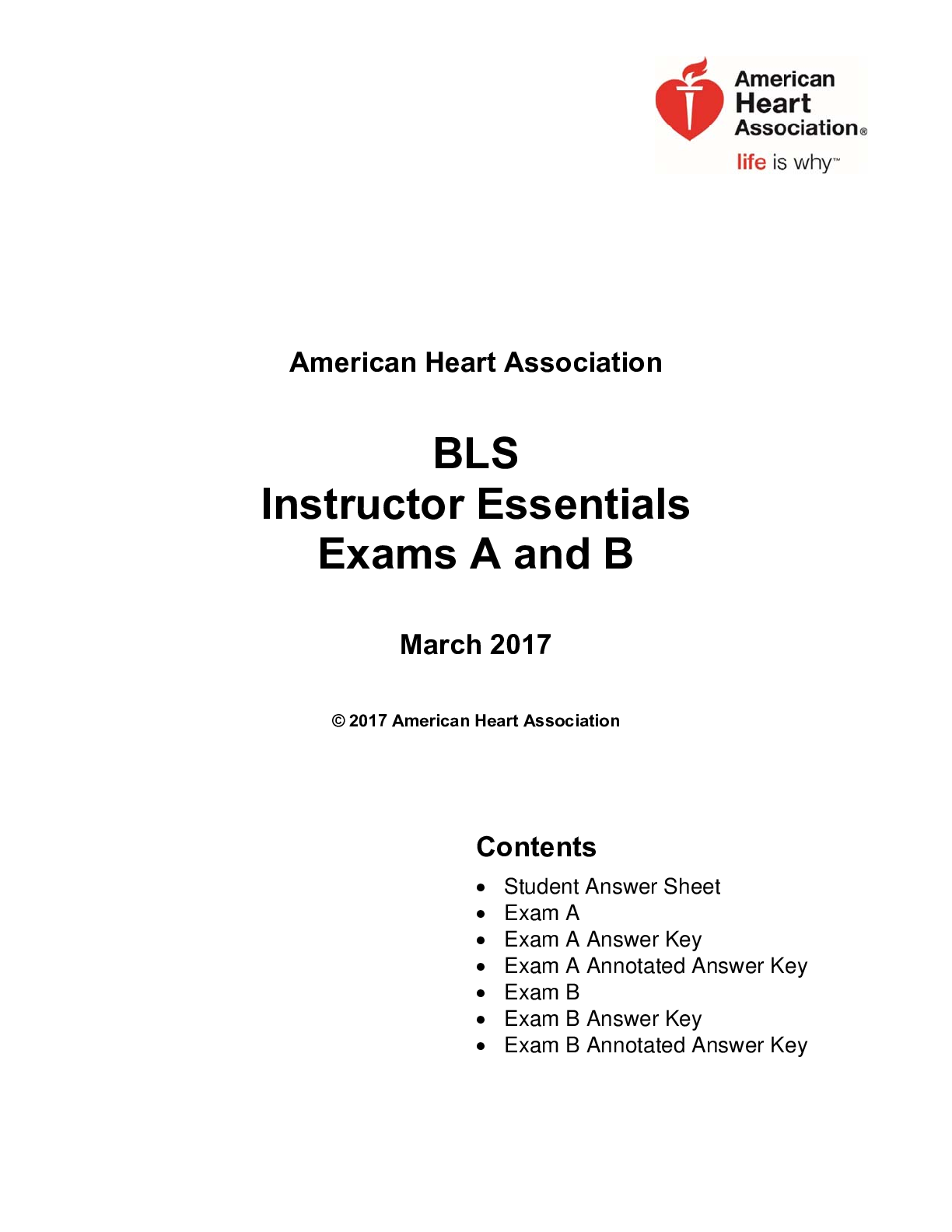

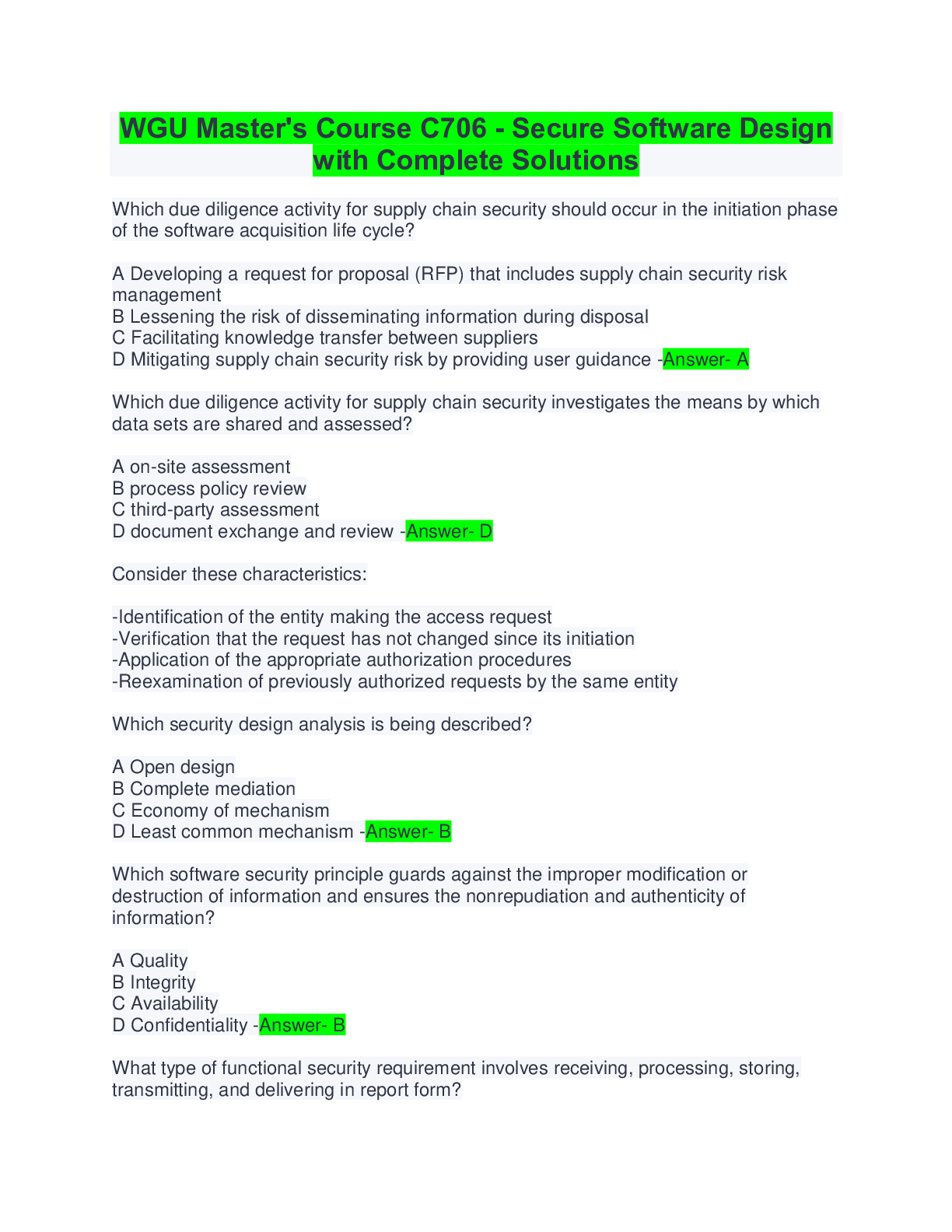

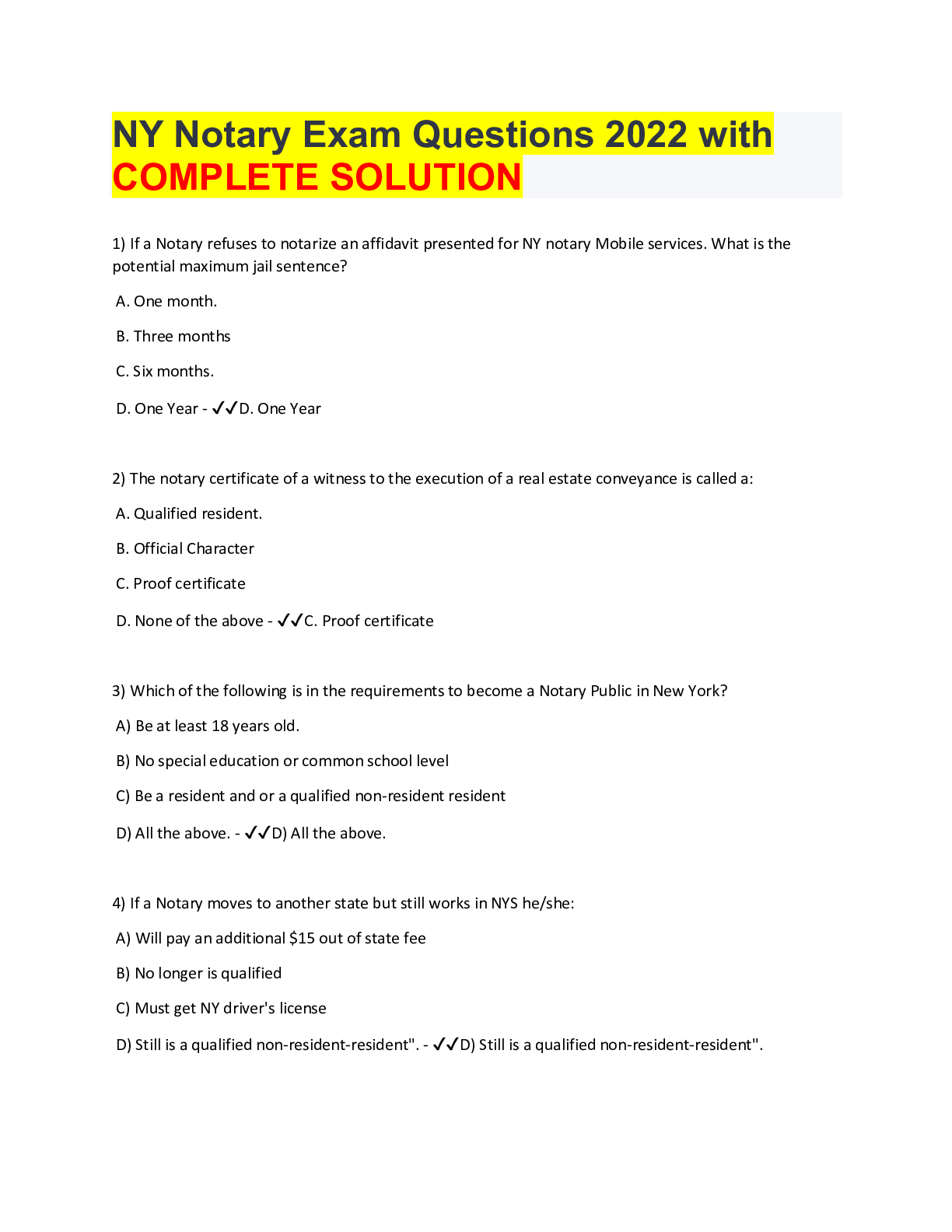
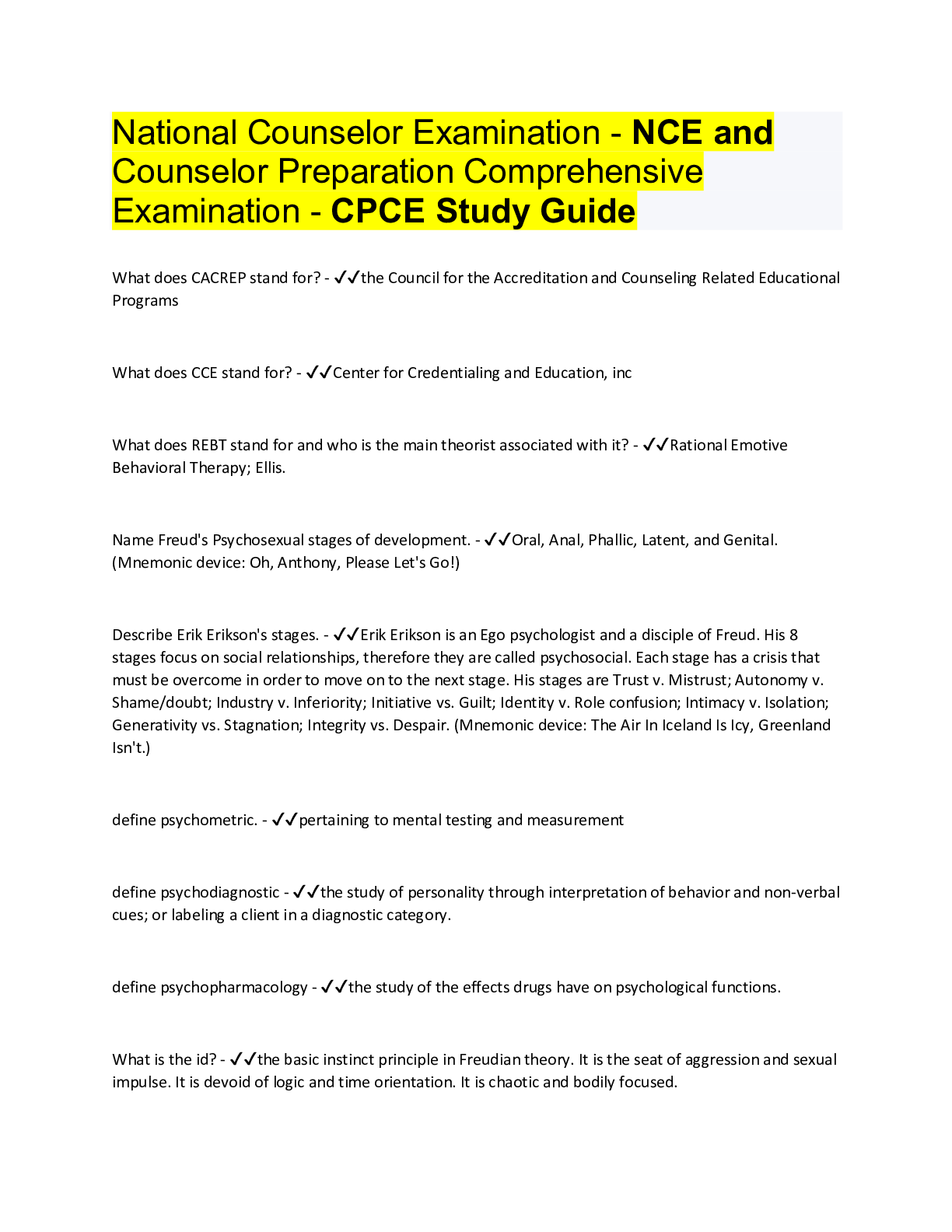
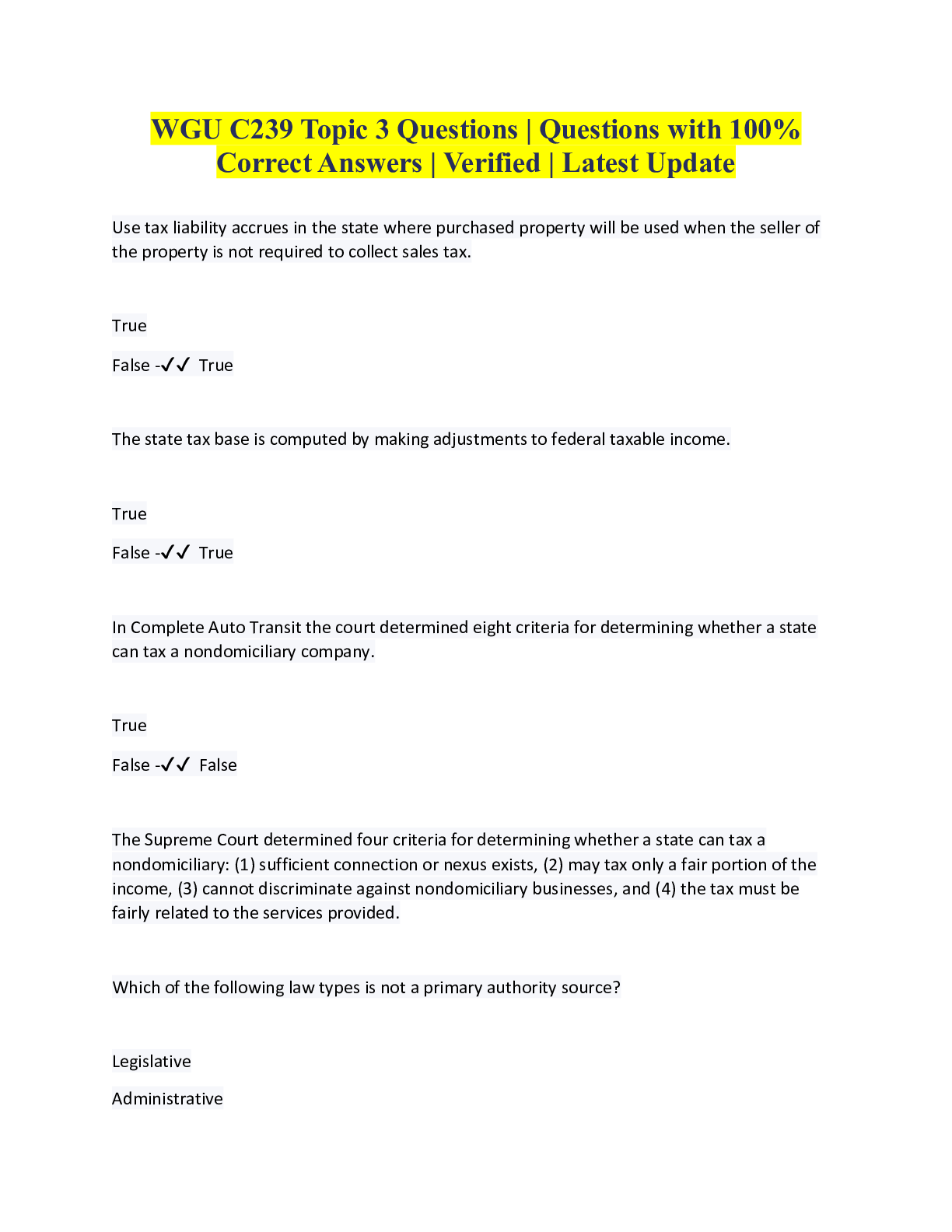
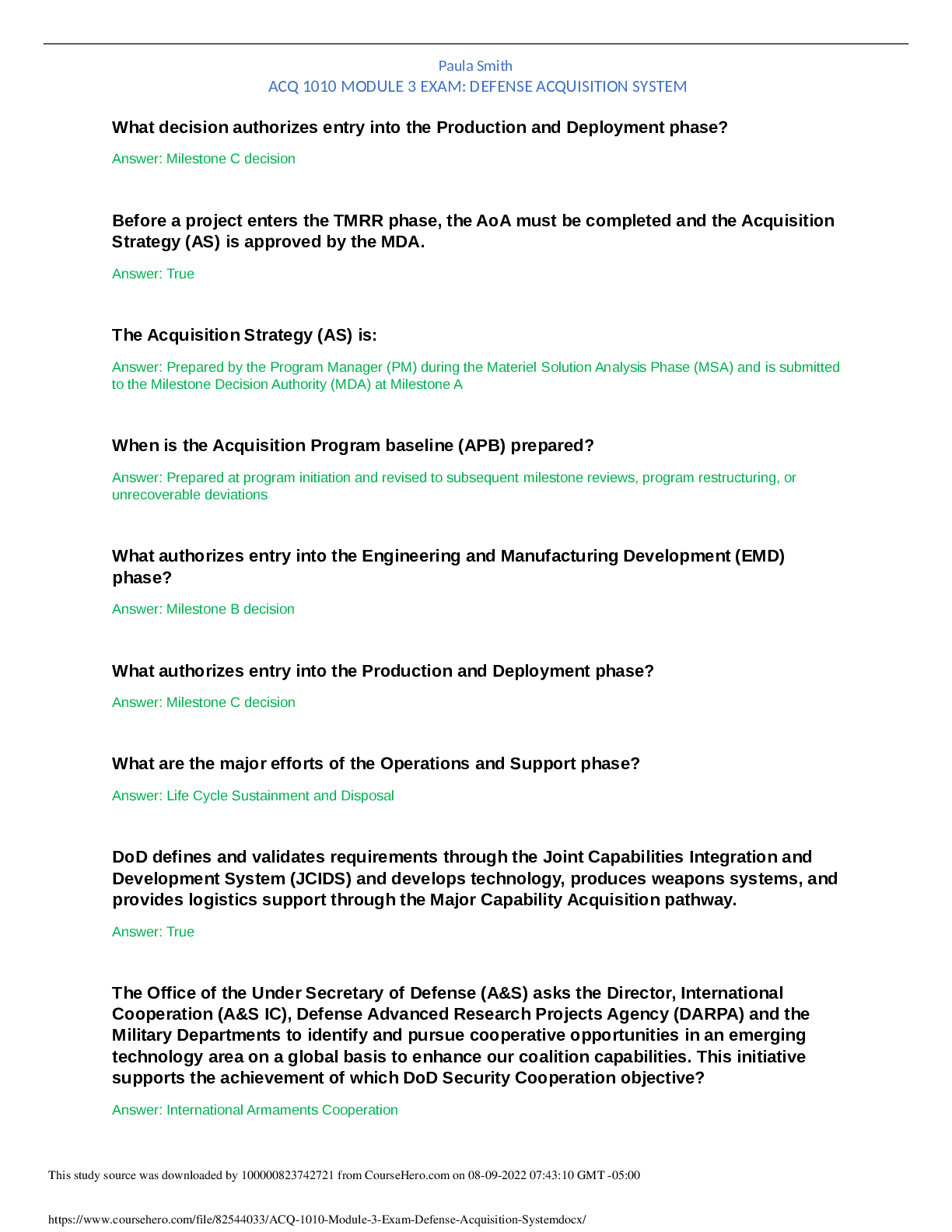









.png)
